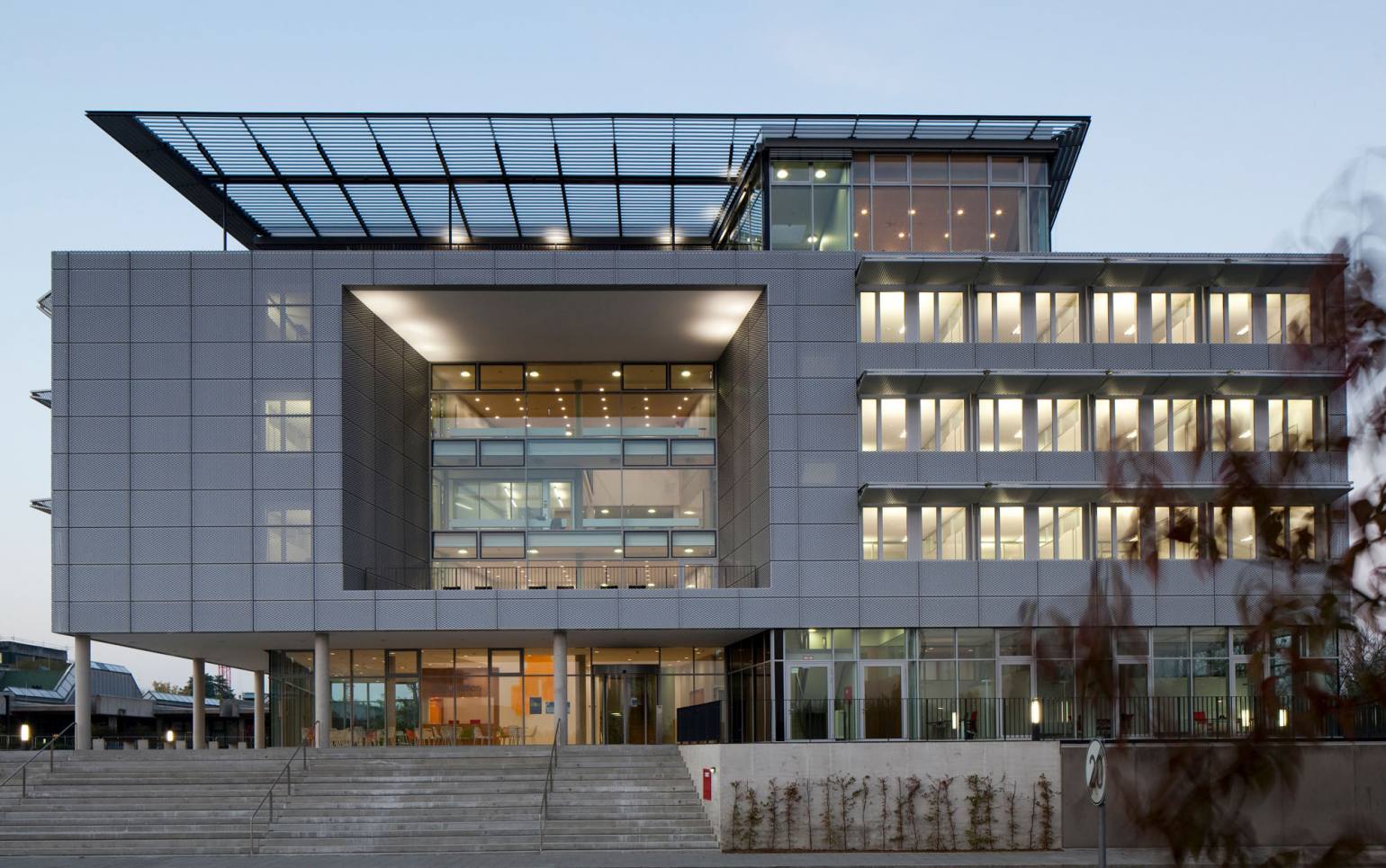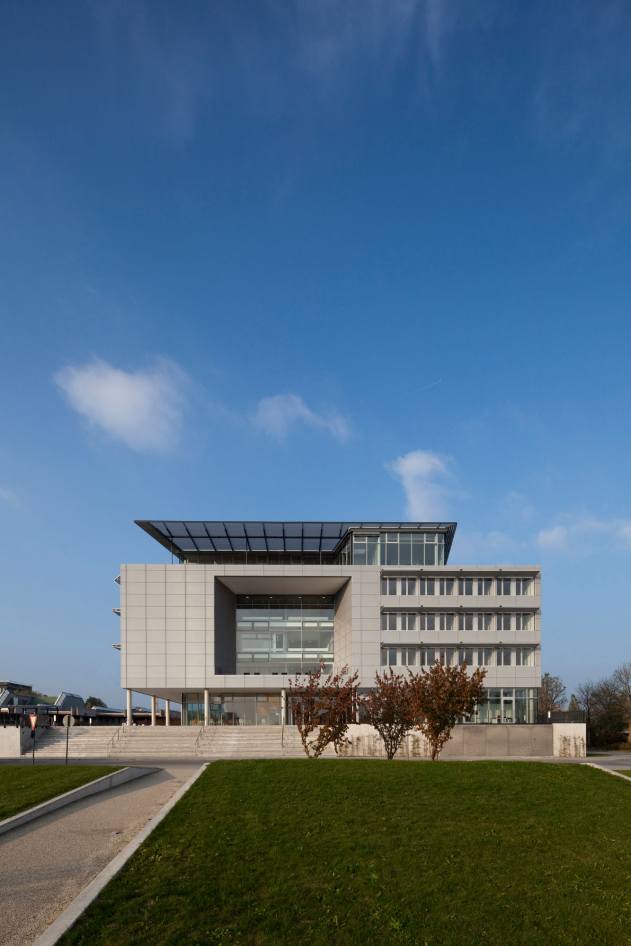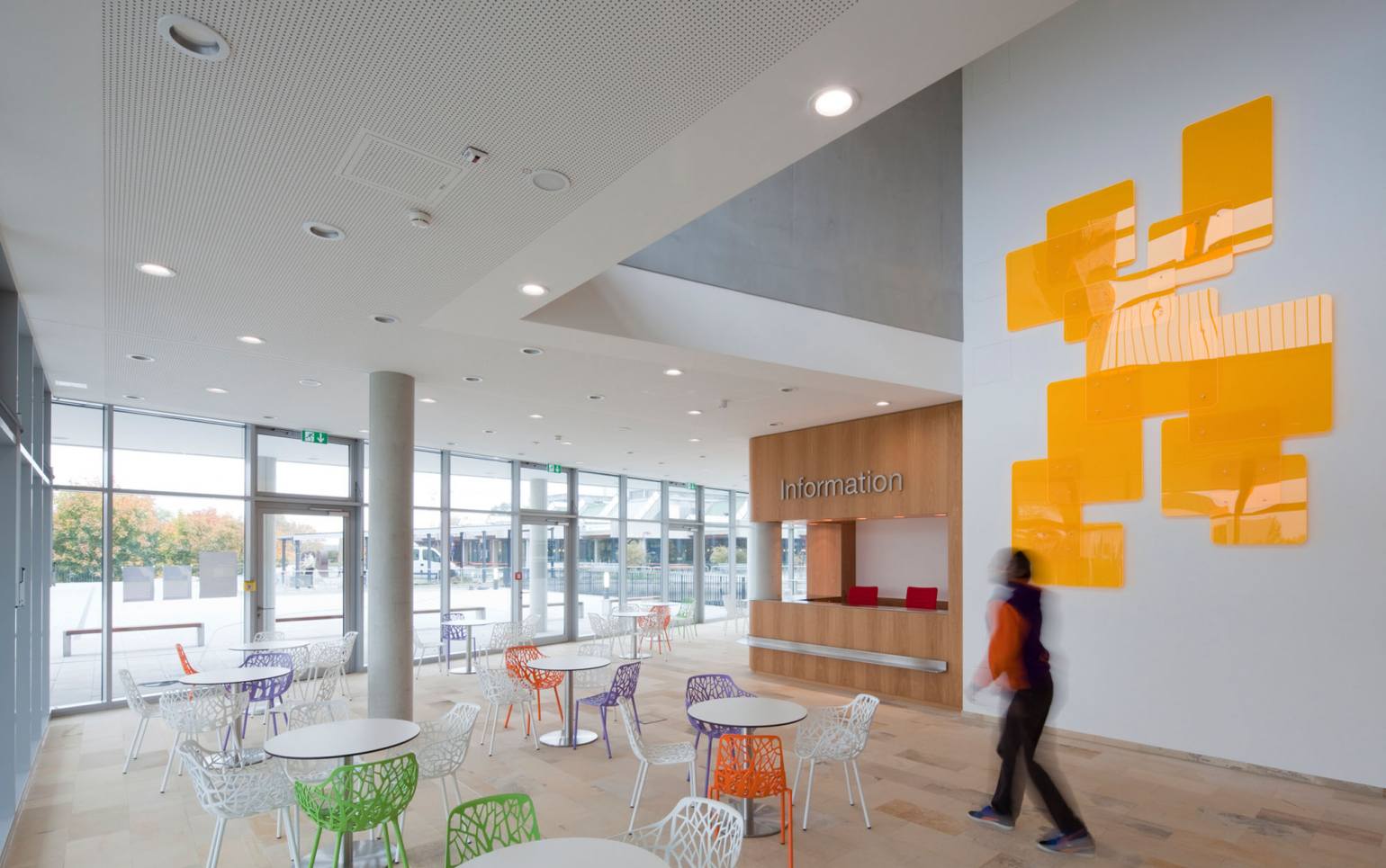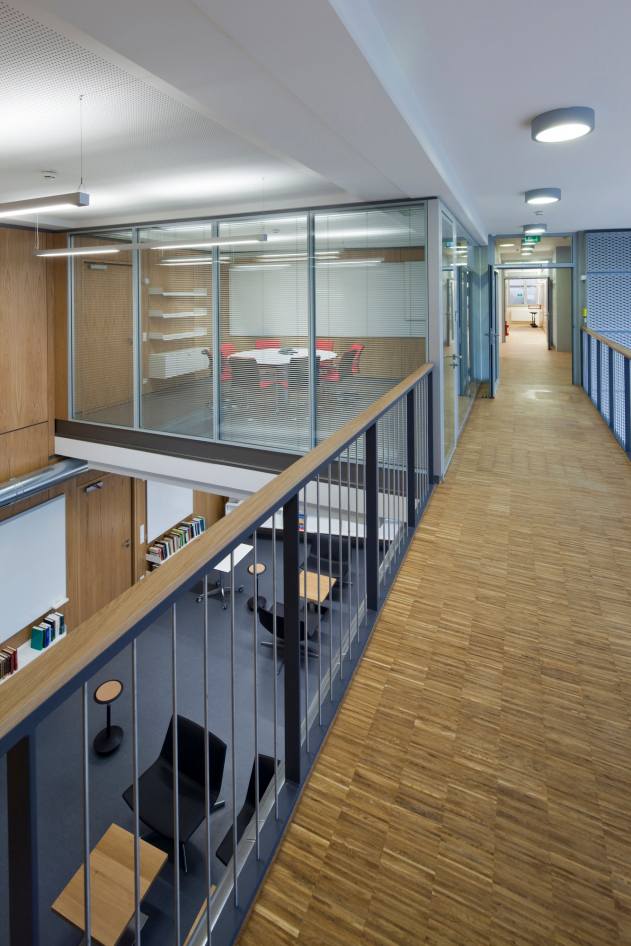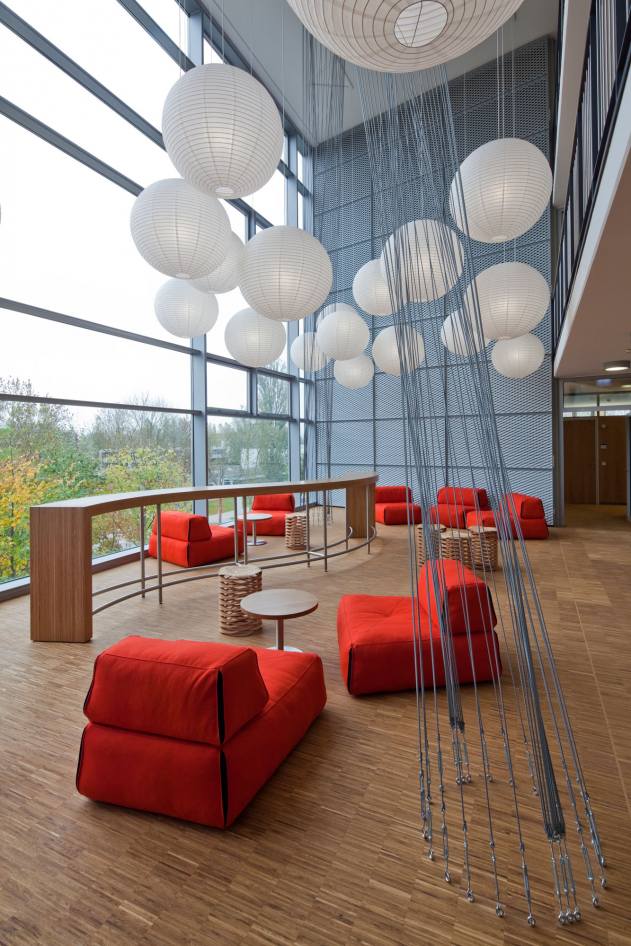Technical University Munich – Institute for Advanced Study (TUM-IAS), Garching
Client
BMW Group Munich
Competition 1st prize
2008
Start of Planning - Completion
2008 - 2010
Performance phases
1 - 4
Team
Planning: Andreas Mrusek, Tina Schumacher
Building data
Total cost 8,000,000 €
Gross floor area 3,765 m²
The new building of the TUM Institute for Advanced Study (IAS), sponsored and built by the BMW Group, is situated centrally on the campus of the Technische Universität München (TUM) in Garching. It accommodates an auditorium, exhibition and office spaces, as well as common areas and a Faculty Club. User requirements specified a venue facilitating interdisciplinary and cross-generational exchange between young and more experienced scientists from all over the world.
Located on an elevated entrance terrace, the institute is open to the TUM departments on the campus on all sides. This is emphasized by spatial recesses in the three-storey, cubic building structure, which seems to float above a glazed building entrance level.
The storeys are connected by an open main stairwell, allowing views between the different floors and offering spaces for informal communication between the scientists and encouraging the development of new ideas.
Opportunities for academics to meet or socialise in a relaxed atmosphere are plentiful in the building, such as the lounge area, atrium, terraces and the Faculty Club on the roof level. Space for dedication to undisturbed and concentrated scientific work is provided in the form of office cells. Transparency, exchange and seclusion are characteristics that can be identified both in the floor plan and the façade design. The expanded metal cladding of the office façade and the folding sun protection elements transform the structure into a closed metallic cube, interrupted only by the spatial recesses for the terrace and atrium. The outer metallic skin is contrasted by the beech wood used in the interior design.

